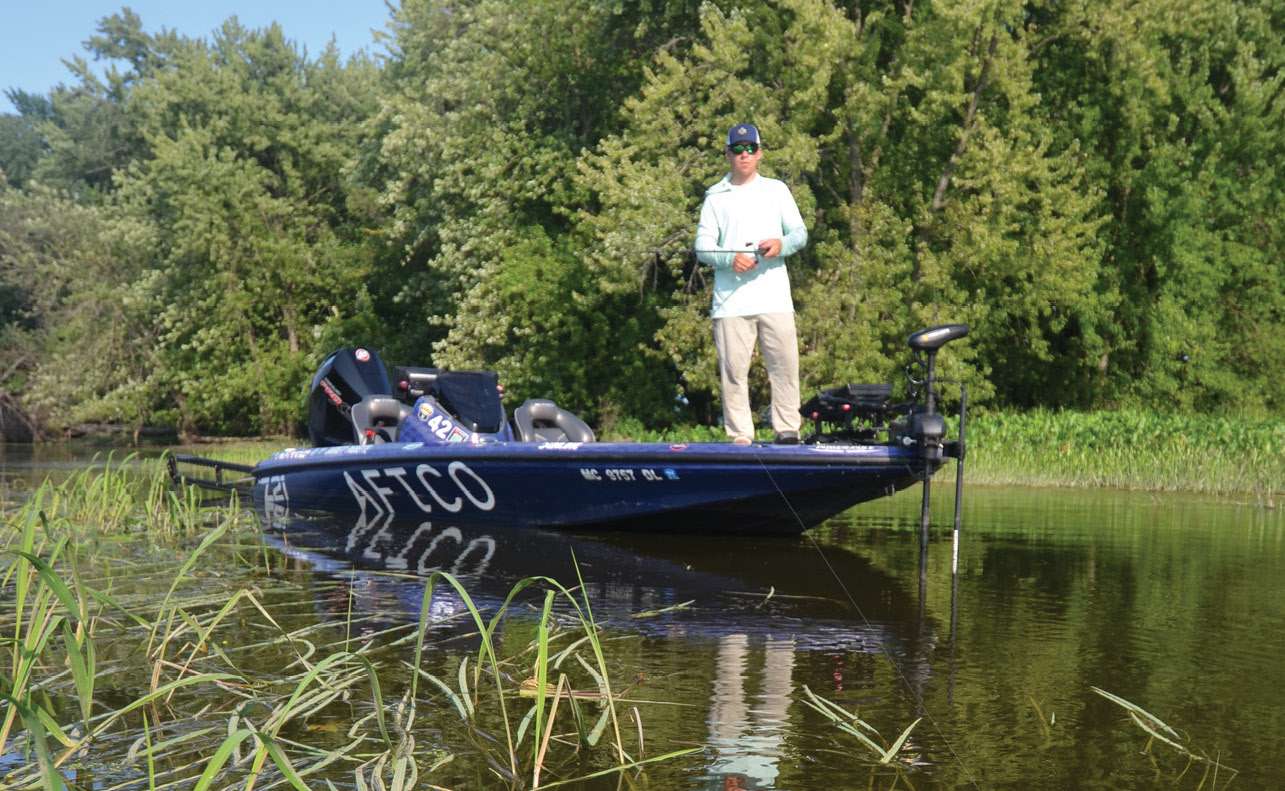
Swimming a worm over and through shallow grass is a mainstay in Florida, and this ploy can draw strikes anywhere in the country where bass lurk in similar cover. The most popular worms for this presentation sport squirming-action tails, such as Zoom’s UltraVibe Speed Worm or Yum’s Thumpin’ Dinger. Thumping paddletail worms are another option, such as Gambler’s Paddle Tail Worm.
Since these types of baits are employed for the same presentation, when should you thump or squirm a swimming worm?
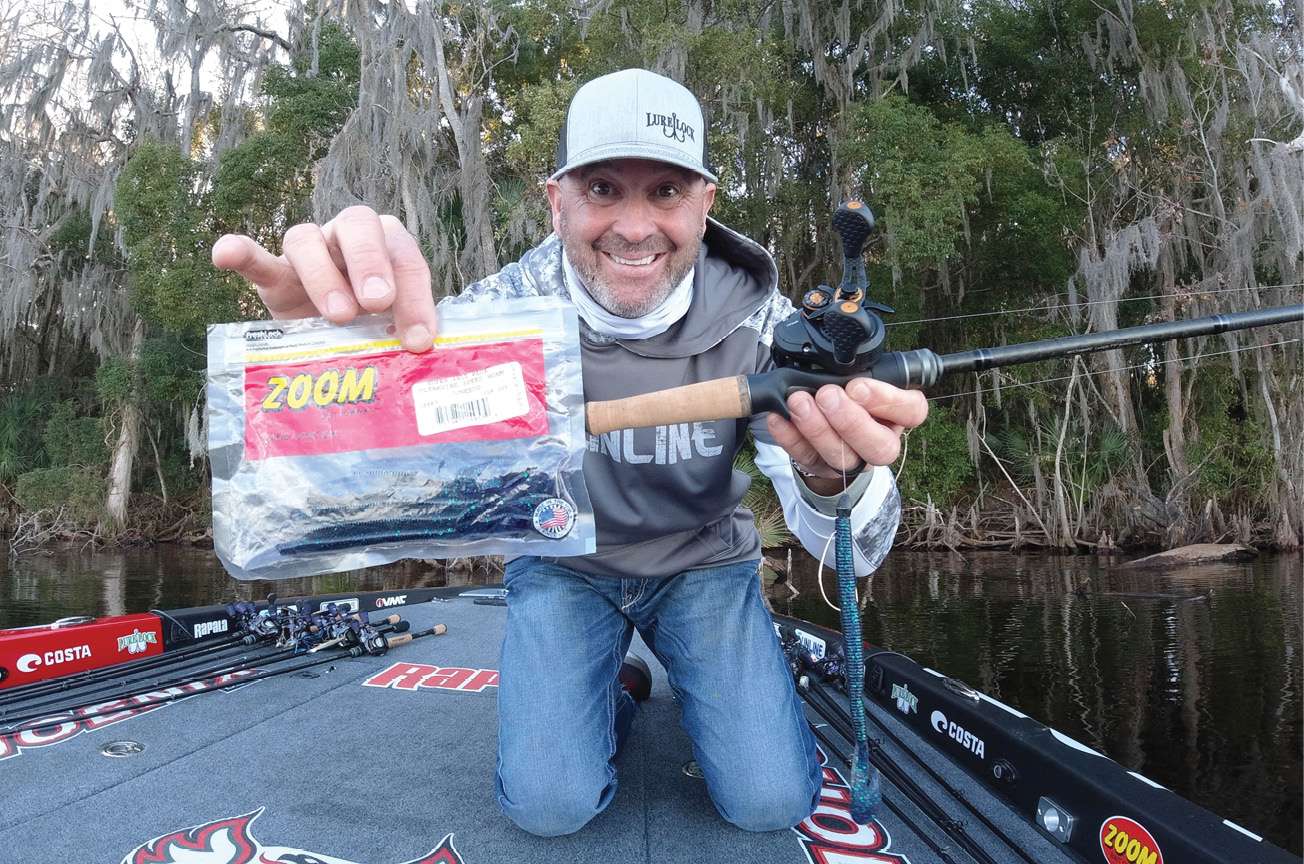
Zoom’s swimming worms have been go-to baits for Bassmaster Elite Series veteran Gerald Swindle for more than 15 years. He Texas rigs these baits with a 4/0 straight-shank VMC worm hook and varies the weight of the bullet sinker.
Thumping
“I swim the original Zoom Speed Worm when the water gets a little dirty,” Swindle said. “Say I’m fishing shallow hydrilla at Kissimmee and the wind turns the water from crystal clear to hay colored. That’s when the extra thump of that little paddle tail can trigger bites.”
Since the bass can’t see the worm as well in off-colored water, Swindle matches the bait with a 1/8-ounce weight so he can retrieve it slowly over and through likely ambush places. “If you wind it too fast, the bass might not have time to react to it,” Swindle said.
Shallow cover that is being muddied by wind and waves generally lends itself to slinging a spinnerbait or some other power presentation. However, bass can be spooky even under these conditions due to heavy fishing pressure, Swindle pointed out. In this situation, the thumping vibrations of a paddletail swimming worm can coax bass into biting when they are too shy to attack more aggressive baits.
Squirming
Besides the 6-inch UltraVibe Speed Worm, Zoom makes a 7-inch Magnum UltraVibe. Swindle opts for the smaller version in most instances. He matches it with a 3/16-ounce bullet sinker when fishing grass in clear water.
The slightly heavier weight allows for a faster retrieve, which works well in clear water where a bass can see and quickly react to a swimming worm. An upbeat retrieve is also more likely to prompt a reflex strike. The squirming tail kicks out vibrations, but not the hard-thumping cadence of the paddle tail.
Beyond grass
Swindle doesn’t limit his swimming worm gambit to shallow vegetation.
“People underestimate the swimming worm,” Swindle said. “Don’t just think of it as a bait for shallow grass. Use your imagination. I’ve caught bass swimming a white pearl UltraVibe around docks over 70 feet of water on Smith Lake during the shad spawn.”
When pitching and swimming the UltraVibe to docks, Swindle matches it with a pegged 1/4-ounce bullet sinker. He does not peg the sinker when fishing grass. If the water is stained, Swindle will swim the paddletail Speed Worm around docks.
“It’s kind of a finesse-y alternative to a swimbait, especially when there’s not a lot of wind,” Swindle said. “You can fish docks behind guys that are casting spinnerbaits and bladed jigs and get bit.”
Dual-purpose swim worms
Several bait companies offer paddletail and squirming-tail swimming worms. There are also dual-purpose swimming worms that are capable of thumping or squirming, including the Tour Swim Worm from Big Bite Baits and the Machete Worm from Reaction Innovations.
Both worms feature a paddle tail that has perforations. Straight from their respective packages, these worms have large, heavy-thumping paddle tails. You turn them into squirming worms by splitting the tails along the perforations.
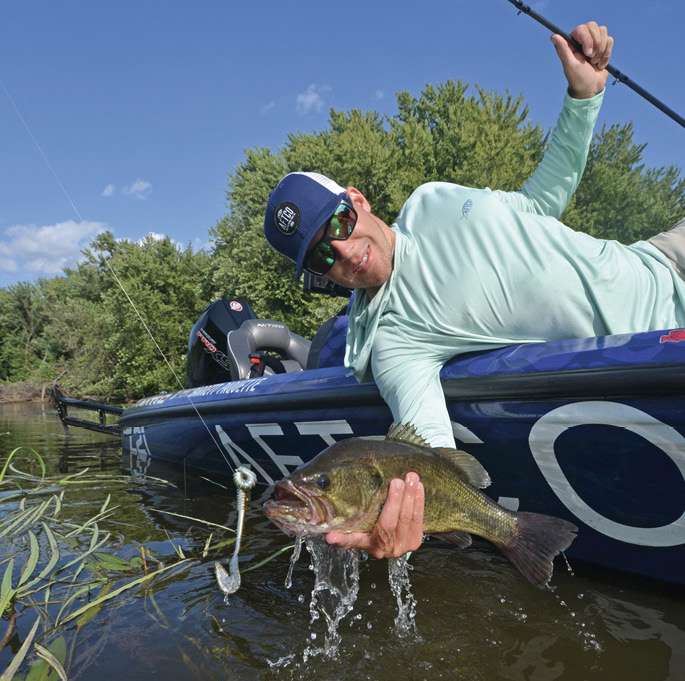
Elite Series pro Garrett Paquette dotes on the Big Bite Baits Tour Swim Worm. He fishes it 90% of the time as a squirming worm. It produces especially well with a swimming retrieve when he fishes grass in Florida or grass in any lake that has been stocked with Florida-strain largemouth.
“I’m not saying Northern bass won’t eat a swimming worm, but it’s just really more deadly on Florida fish,” Paquette said.
The Tour Swim Worm comes in 5.5- and 7.5-inch sizes. For swimming applications, Paquette opts for the longer version. He Texas rigs it with a 5/0 Gamakatsu worm hook and a 1/8- to 3/16-ounce bullet weight, and he retrieves it steadily just under the surface over shallow grassbeds. He regards this as a finesse swimbait presentation.
When bass lurk under pads and matted grass with openings, Paquette fishes the worm weightless and drags it on the surface over the cover. This makes the squirming tail churn the water “like a subtle, buzzing frog.”
The 7.5-inch size is heavy enough that it casts well with baitcasting tackle, Paquette added.
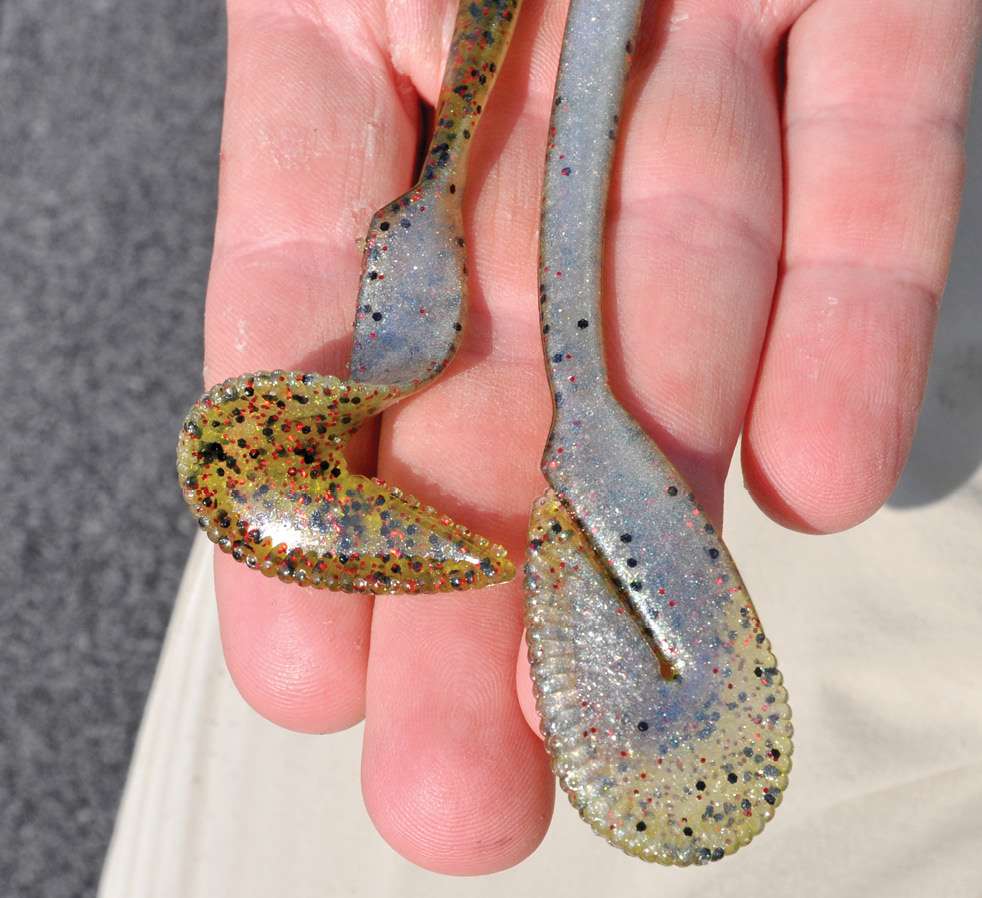
Over the past few seasons, Paquette has done well with a squirming worm by working it through grass with a pull-drop retrieve. He steps up to a 1/4-ounce tungsten bullet weight for this presentation. This makes the worm sink faster and gives the tail more action, both of which prompt reflex strikes.
This presentation paid off for Paquette on the first day of the 2019 Bassmaster Elite Series tournament at South Carolina’s Winyah Bay. He made the 100-plus-mile run up the Cooper River, which left him with only four hours of fishing time. By going to work with his pull-drop retrieve in 3-foot-deep hydrilla beds, he boated a dozen bass on the swimming worm that yielded a limit over 12 pounds. It was good enough to put him in sixth place. Sadly, the bass were not as cooperative on Day 2 and he fell to 29th place.
Flip and pitch
Paquette reserves the 5.5-inch version of the Tour Swim Worm for flipping and pitching presentations. He leaves the paddle tail intact because it slides through cover more easily than the squirming version and puts out subtle thumping vibrations as it sinks.
“It’s a really good bait in pressured fish situations,” Paquette said. “I rig it with as light a weight as possible, usually 1/8- to 3/16-ounce, depending on the cover. I’ve done really well with it flipping pads in Florida.”
Swindle also flips and pitches Zoom’s paddletail Speed Worm. It slides through cover without hanging up as a squirming or curled-tail worm will do, and the paddle tail gives the bait more action than that of a straight-tail worm.
“When I flip the Speed Worm, I pop it up and let it fall,” Swindle said.
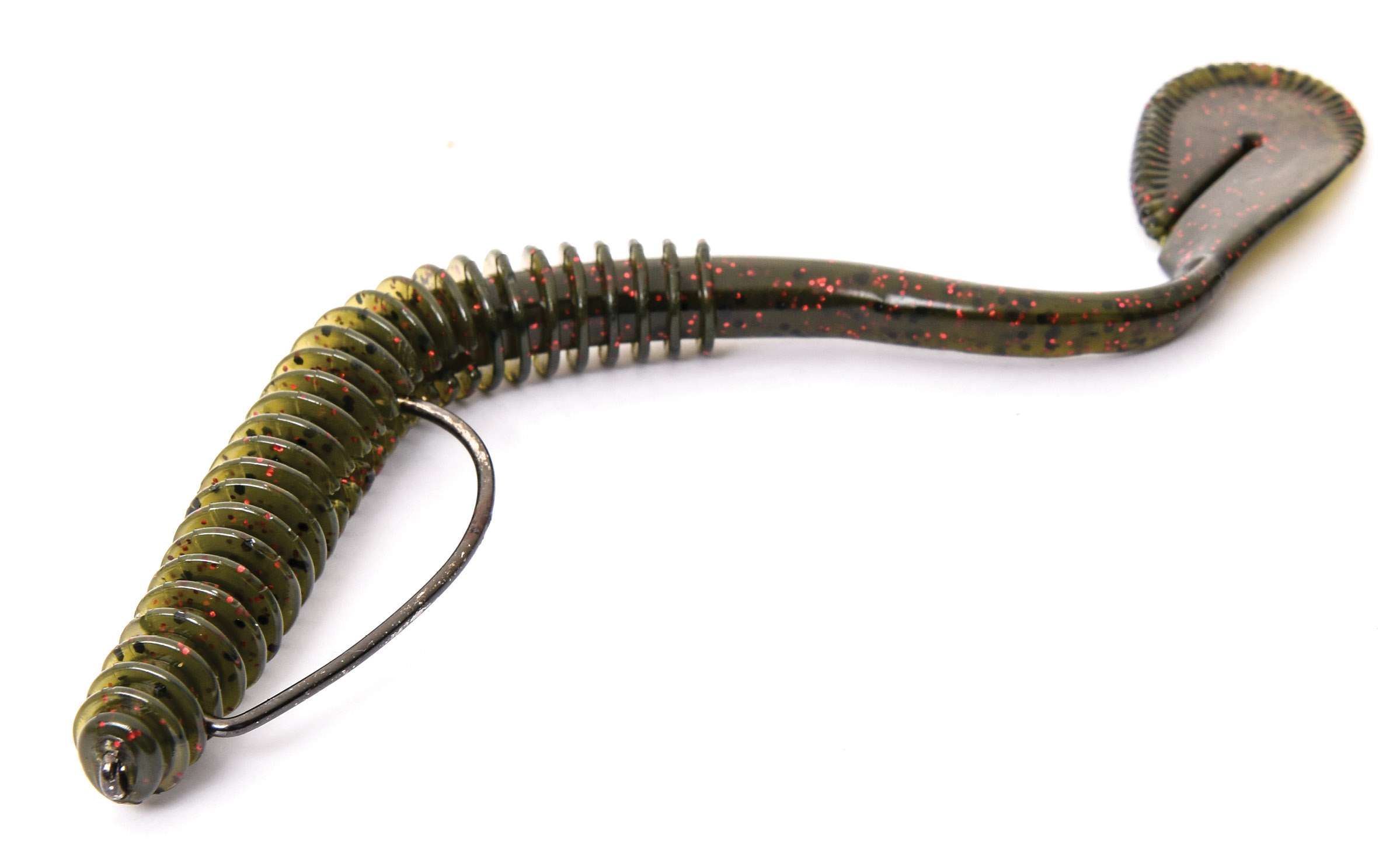
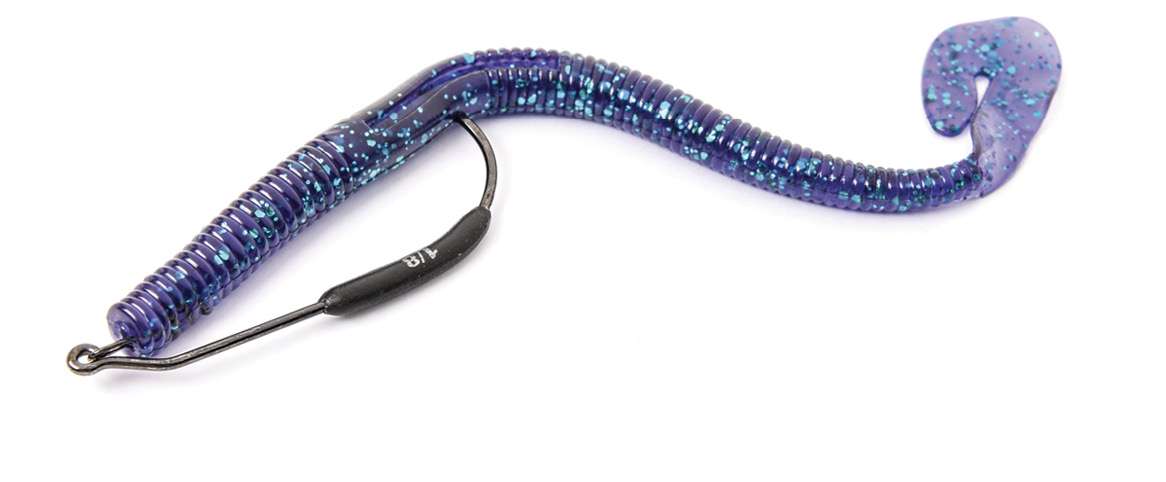
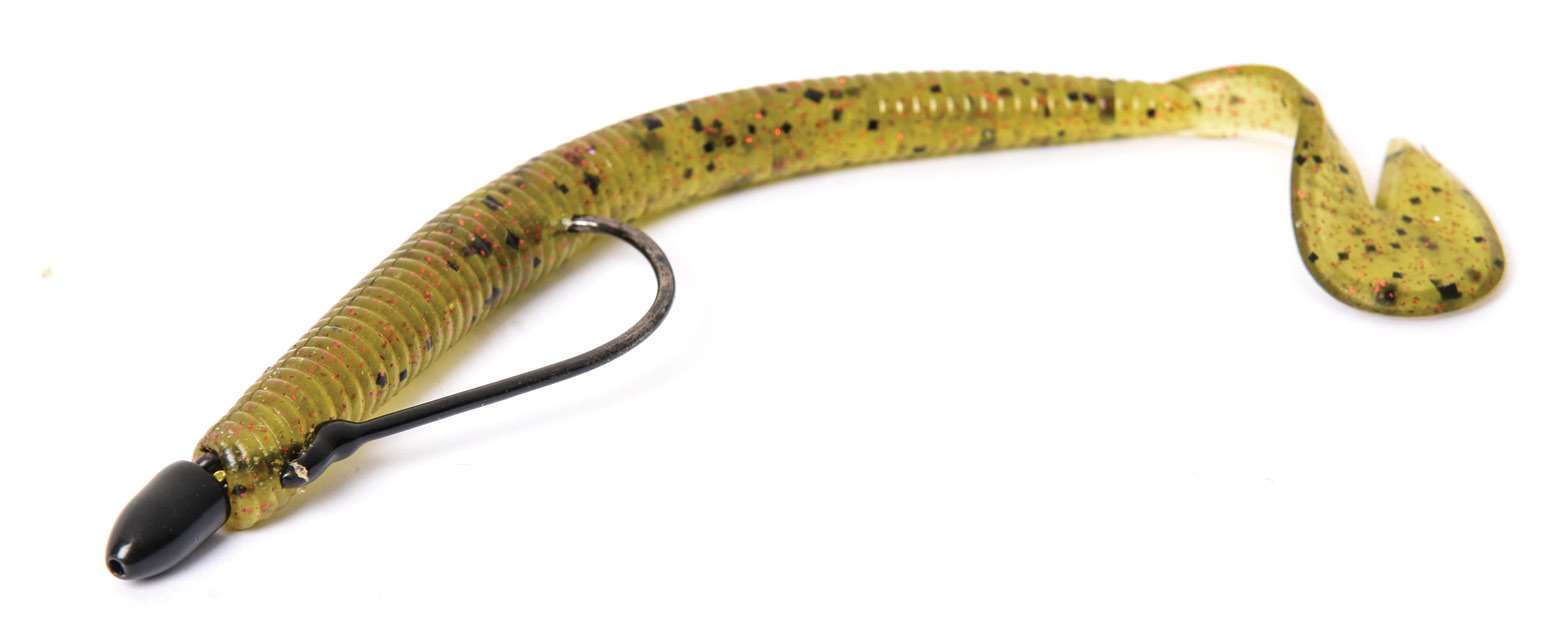
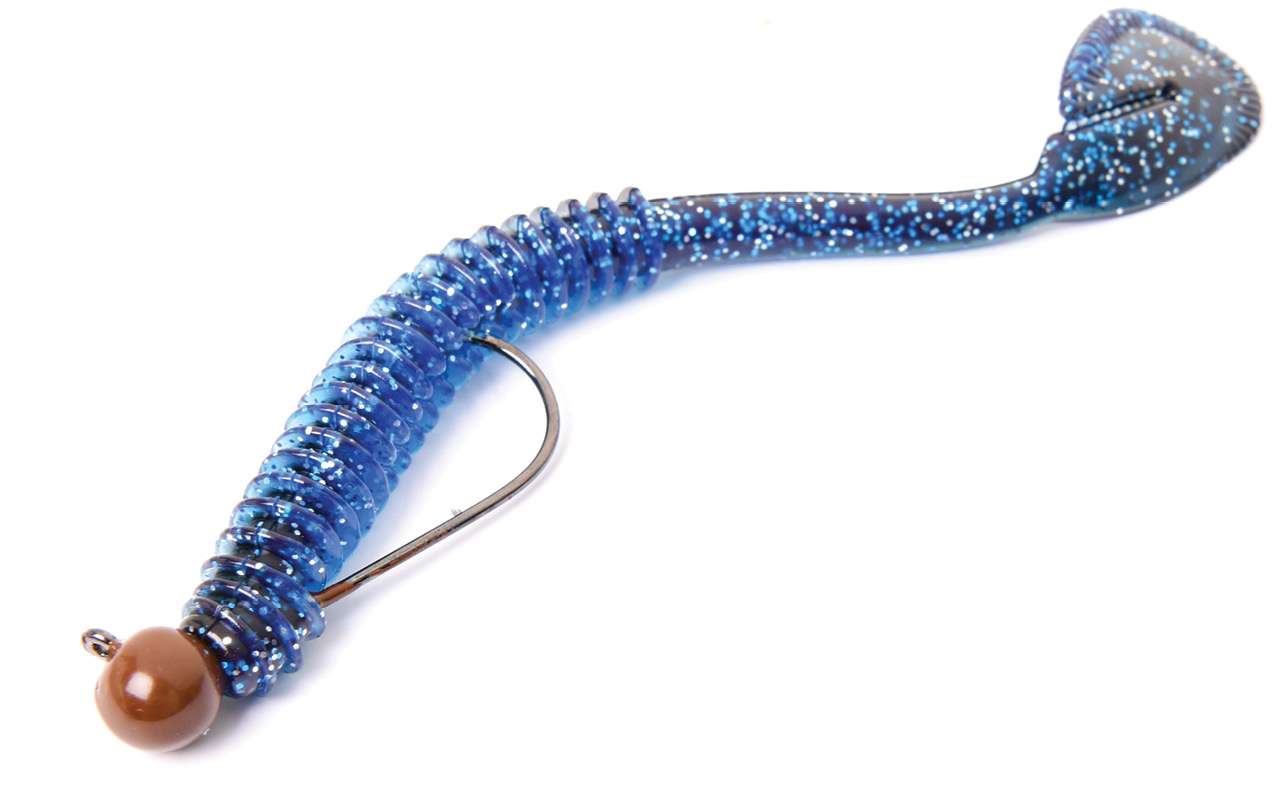
Tackle
Garrett Paquette: 7-foot, 5-inch medium-heavy Douglas XMatrix casting rod, 8.1:1 gear ratio reel and 16- or 18-pound Sunline Shooter fluorocarbon.
“I like a long rod so I can drive the hook home in all swimming worm situations,” Paquette said. “If I’m buzzing the worm over really thick grass, I might go to 50-pound Sunline FX2 Braid and a 7-foot, 6-inch heavy action rod.”
Gerald Swindle: 7-foot medium-heavy casting rod, 6.8:1 Lew’s reel and 16-pound Sunline Shooter fluorocarbon.
Originally appeared in Bassmaster Magazine 2020.





